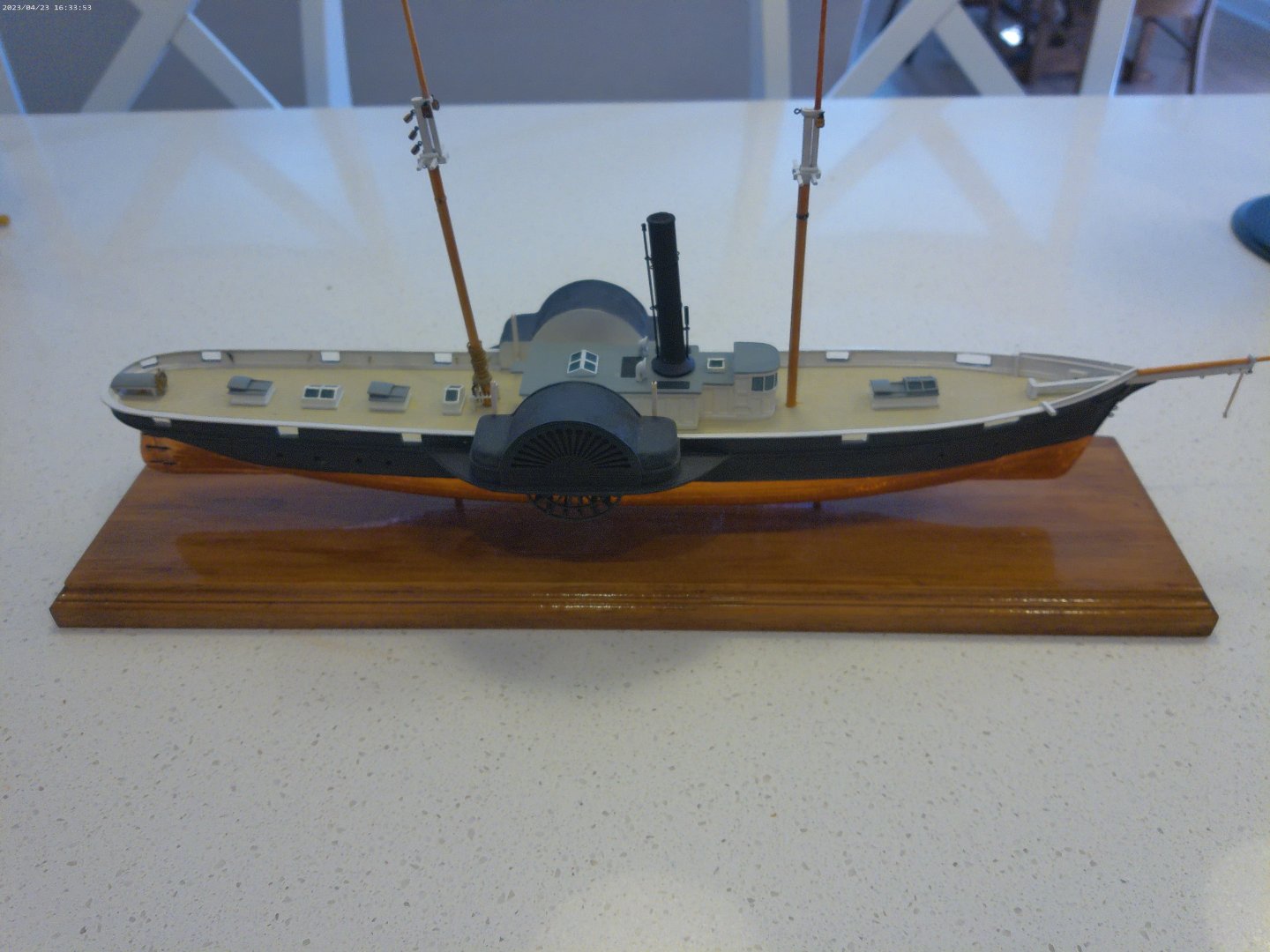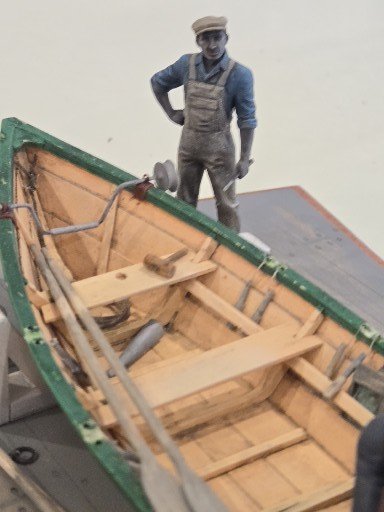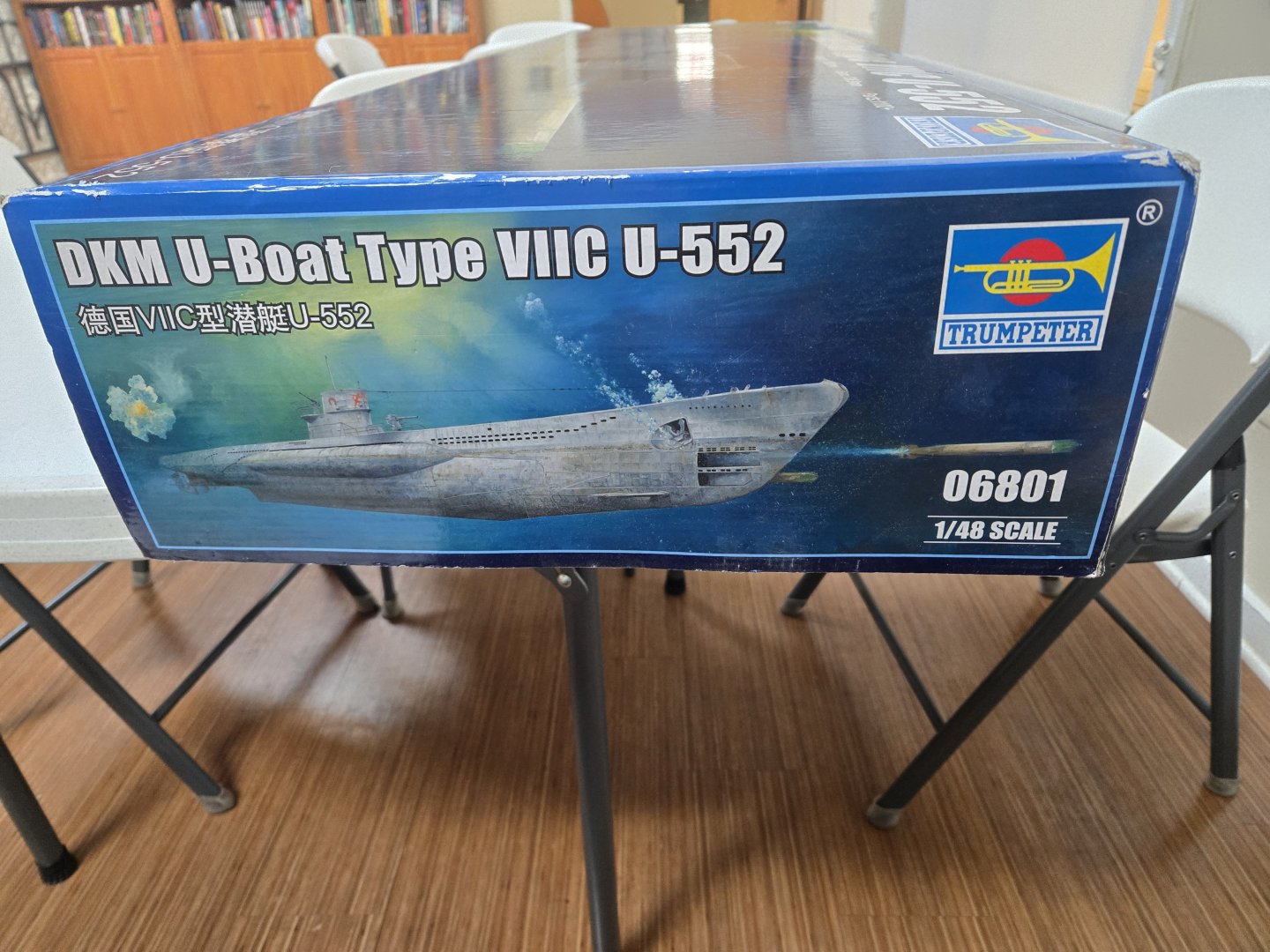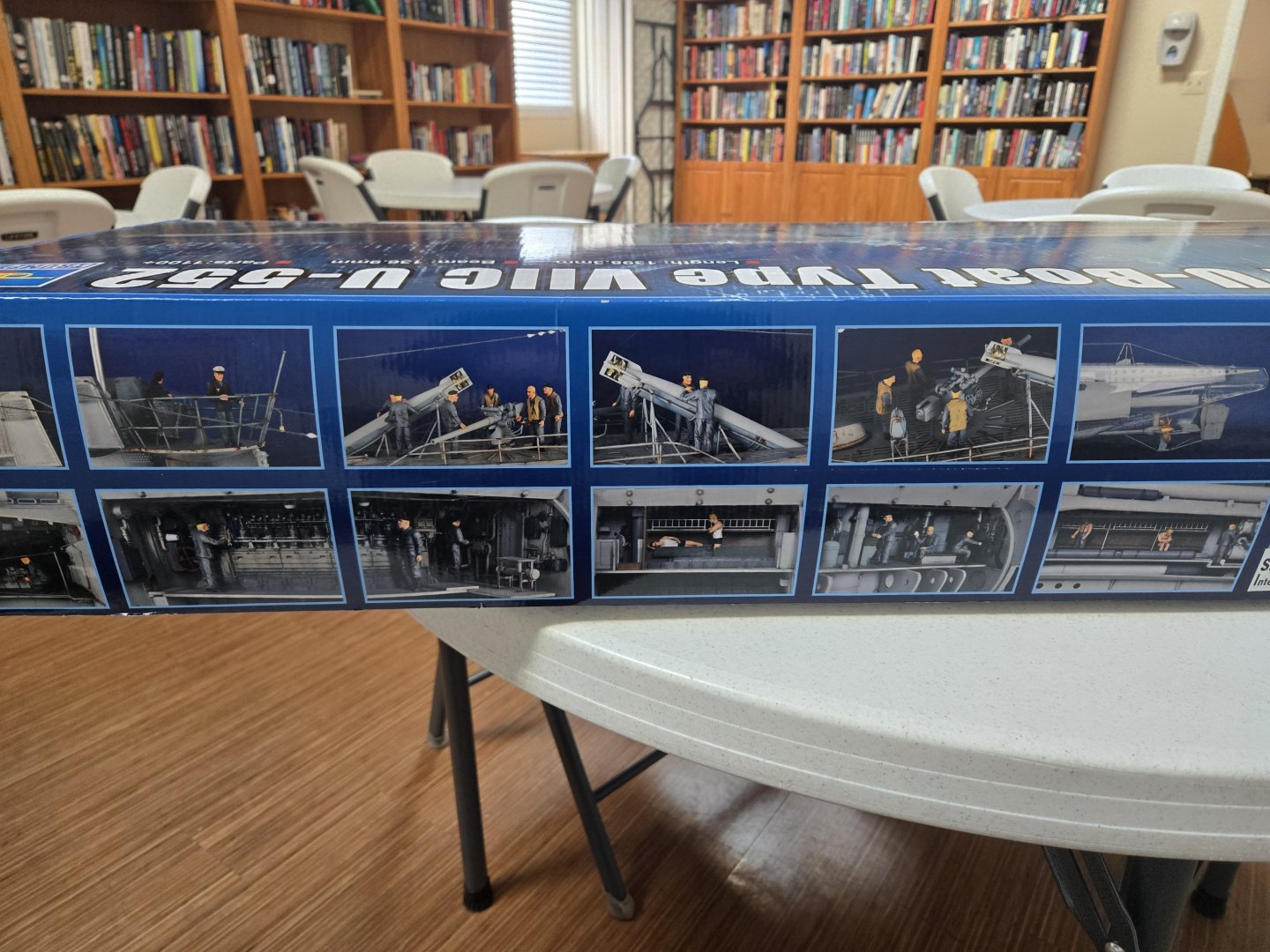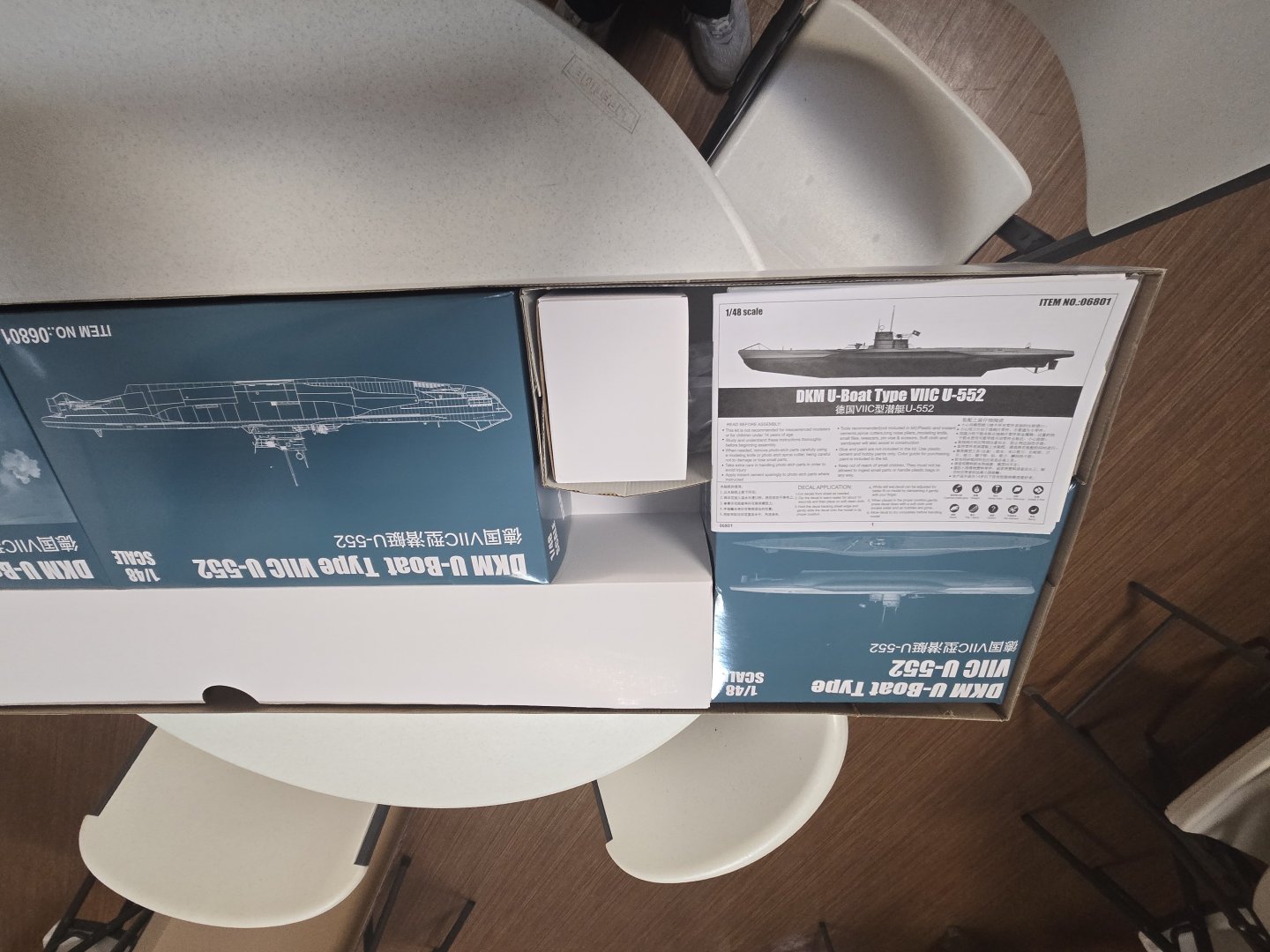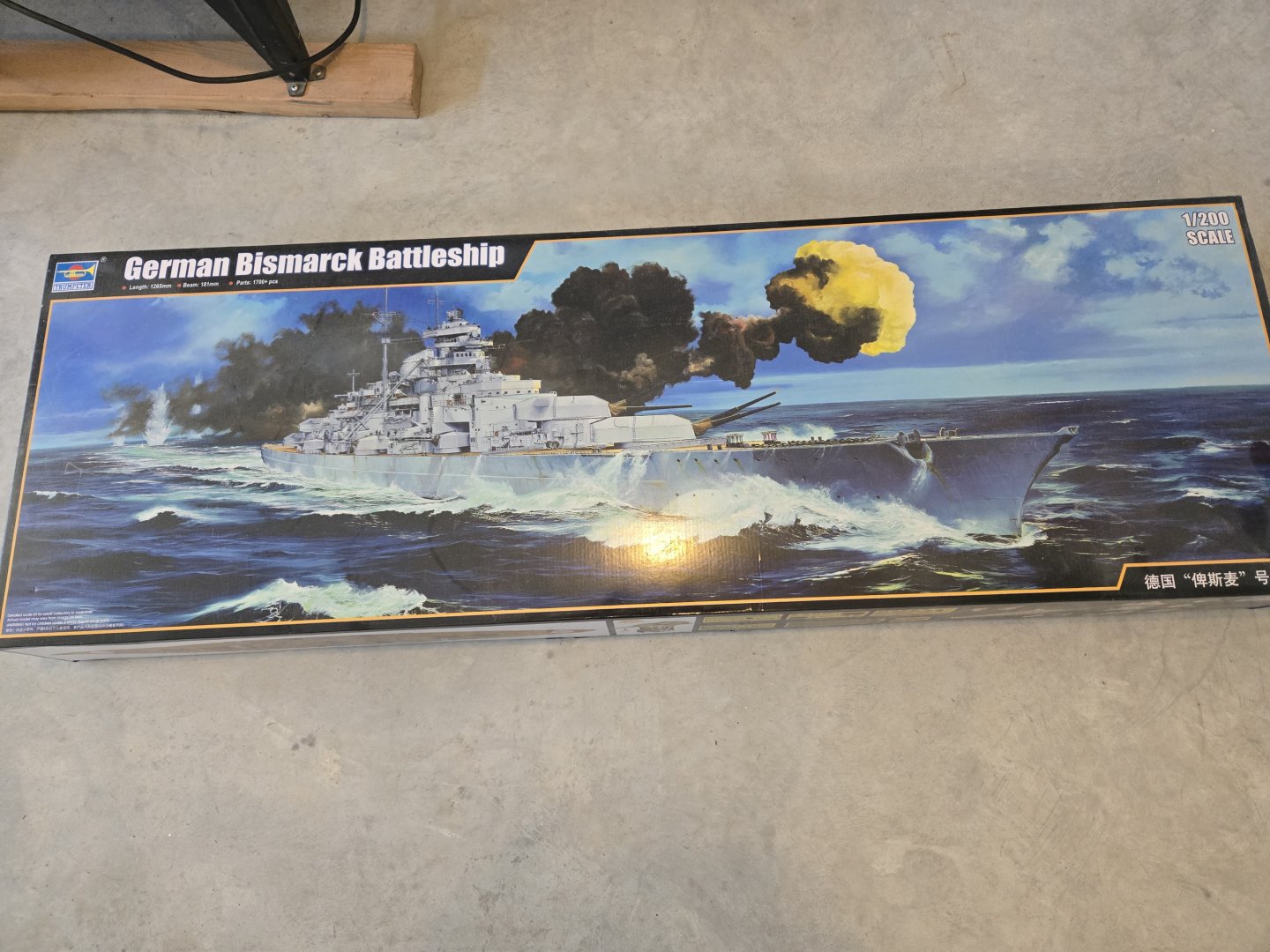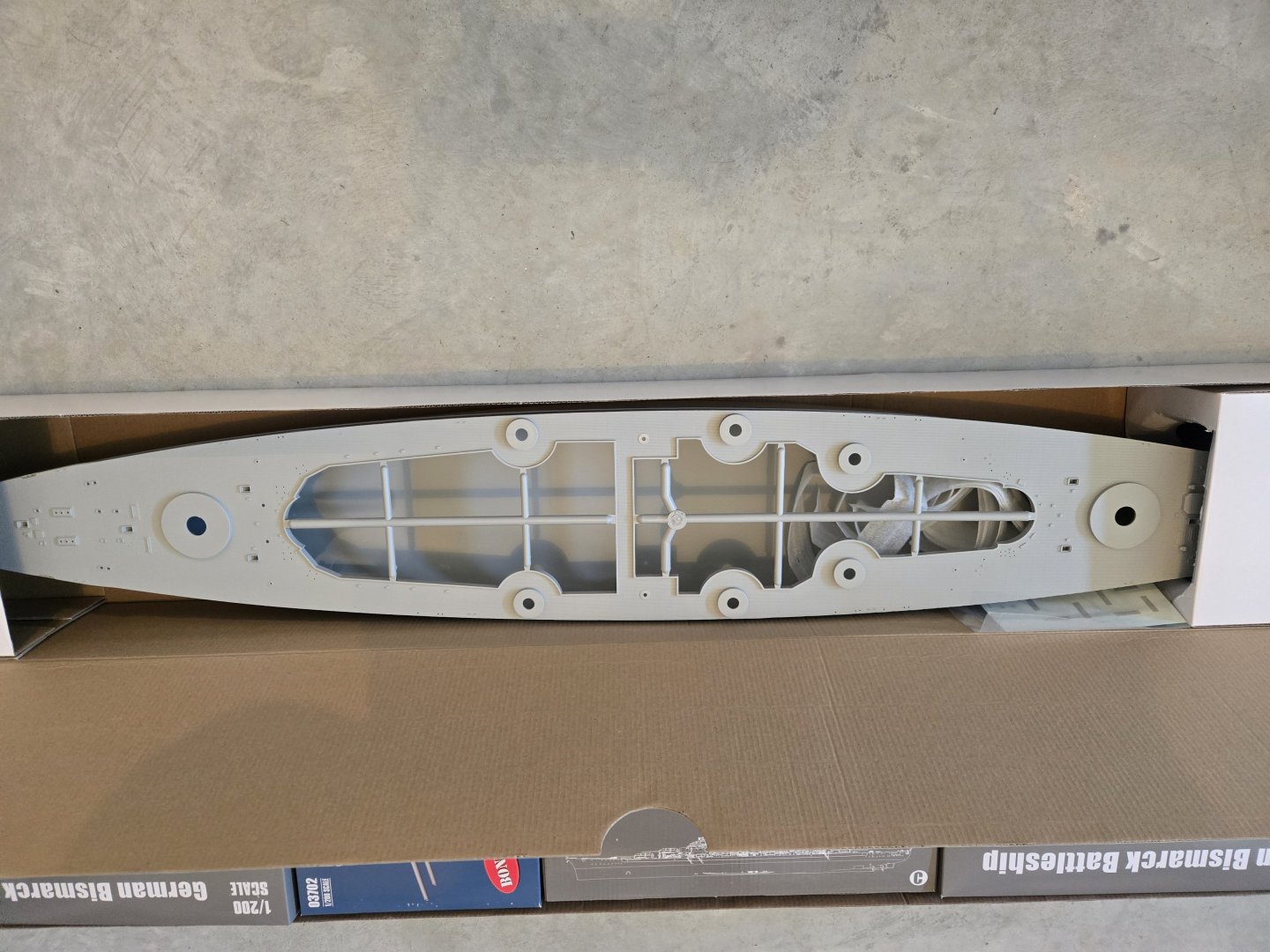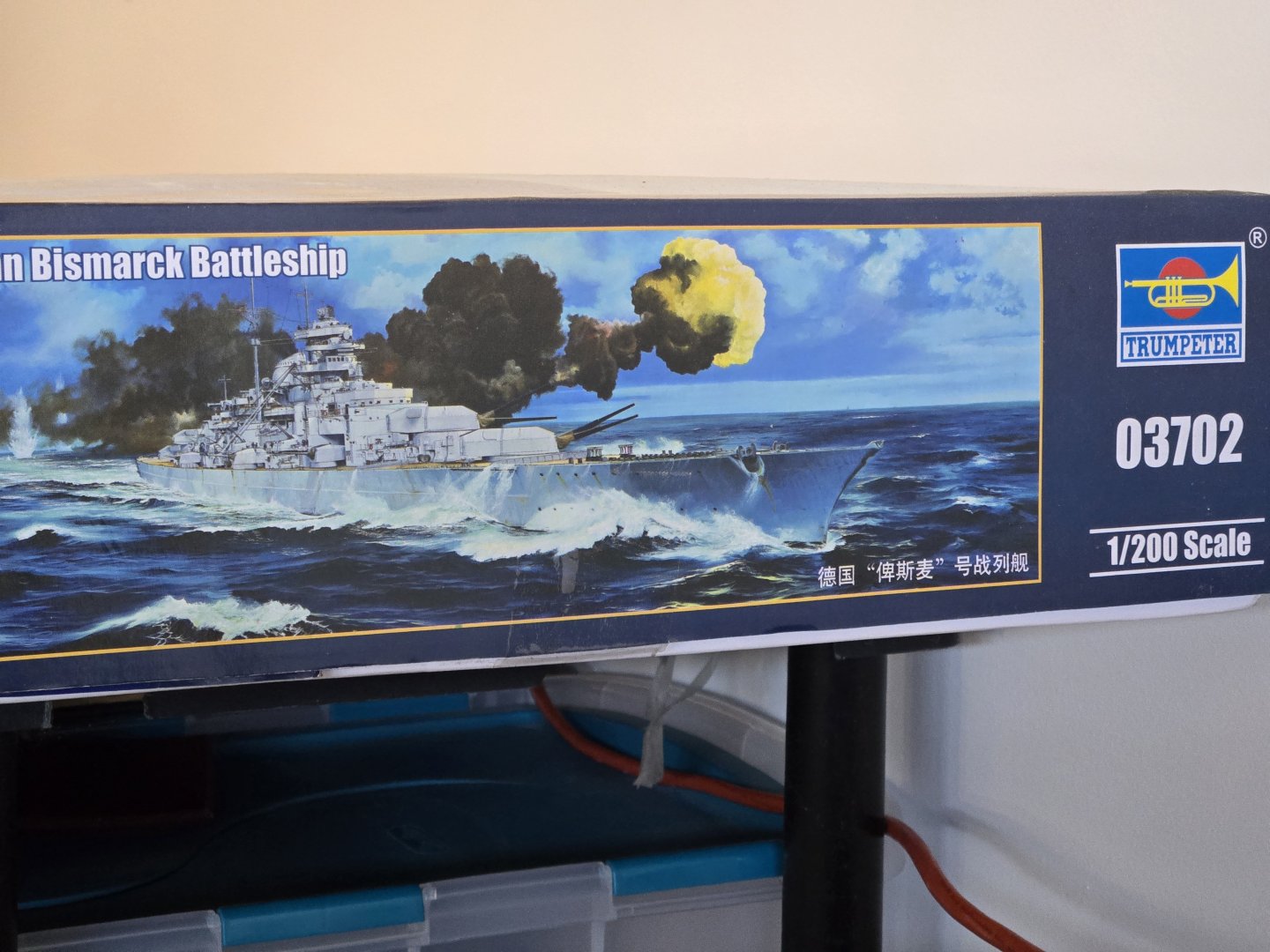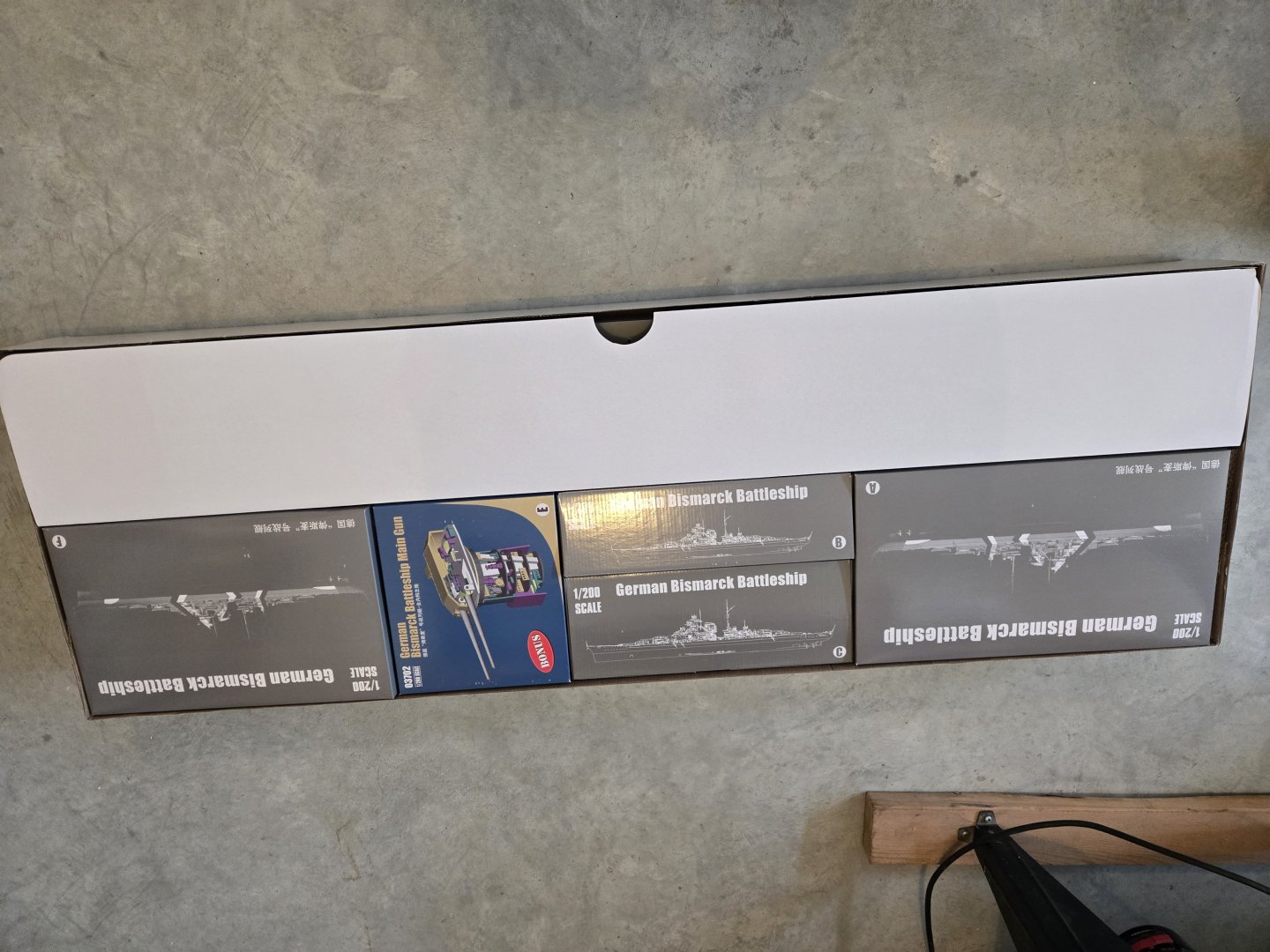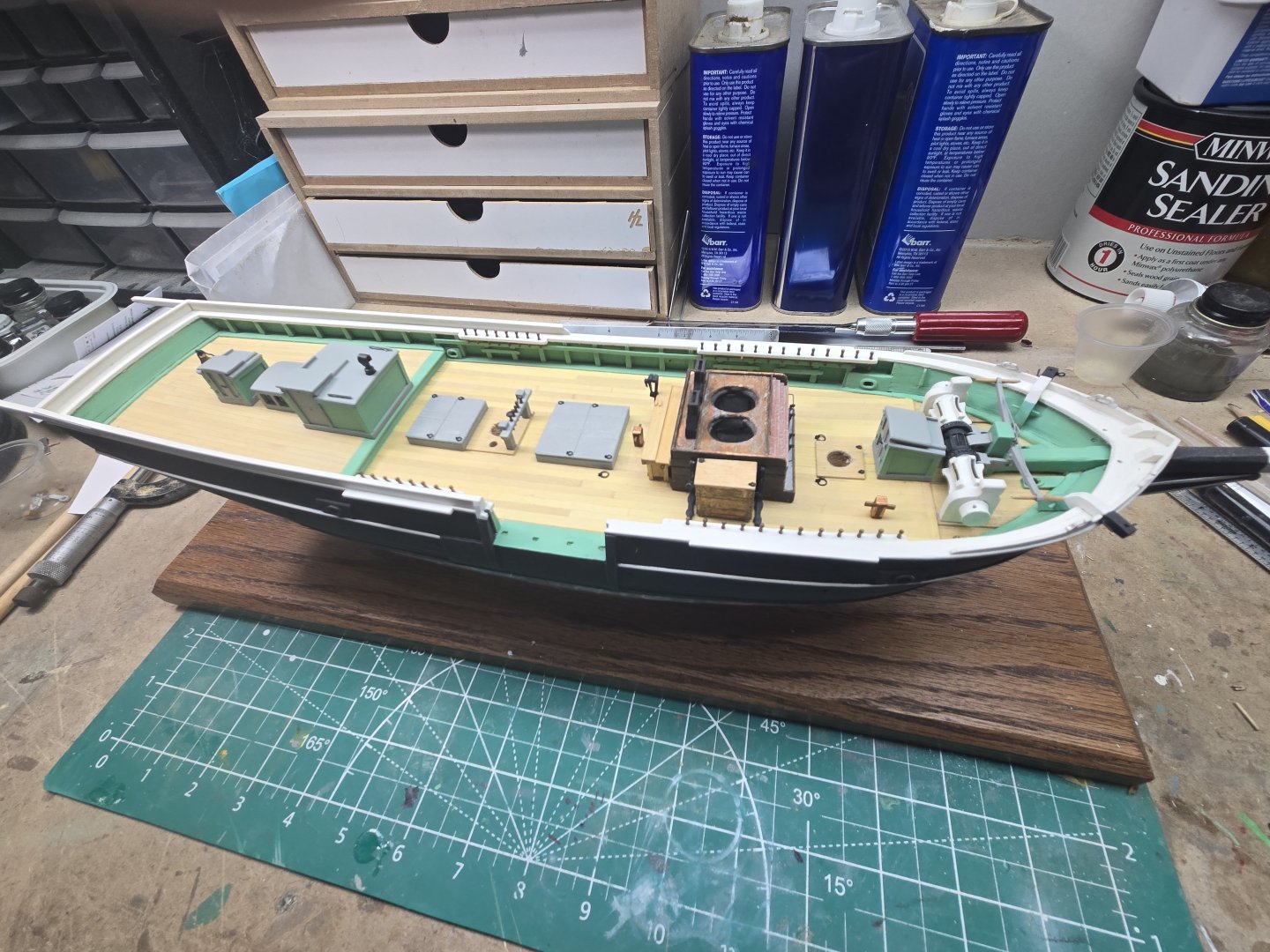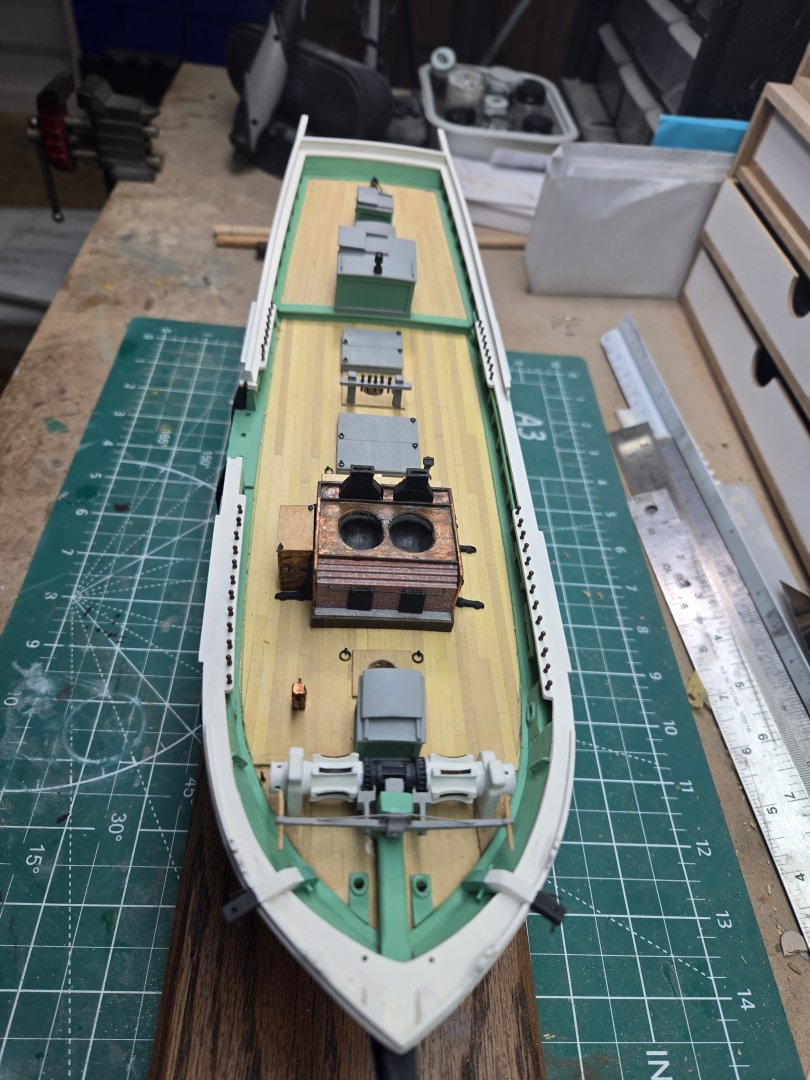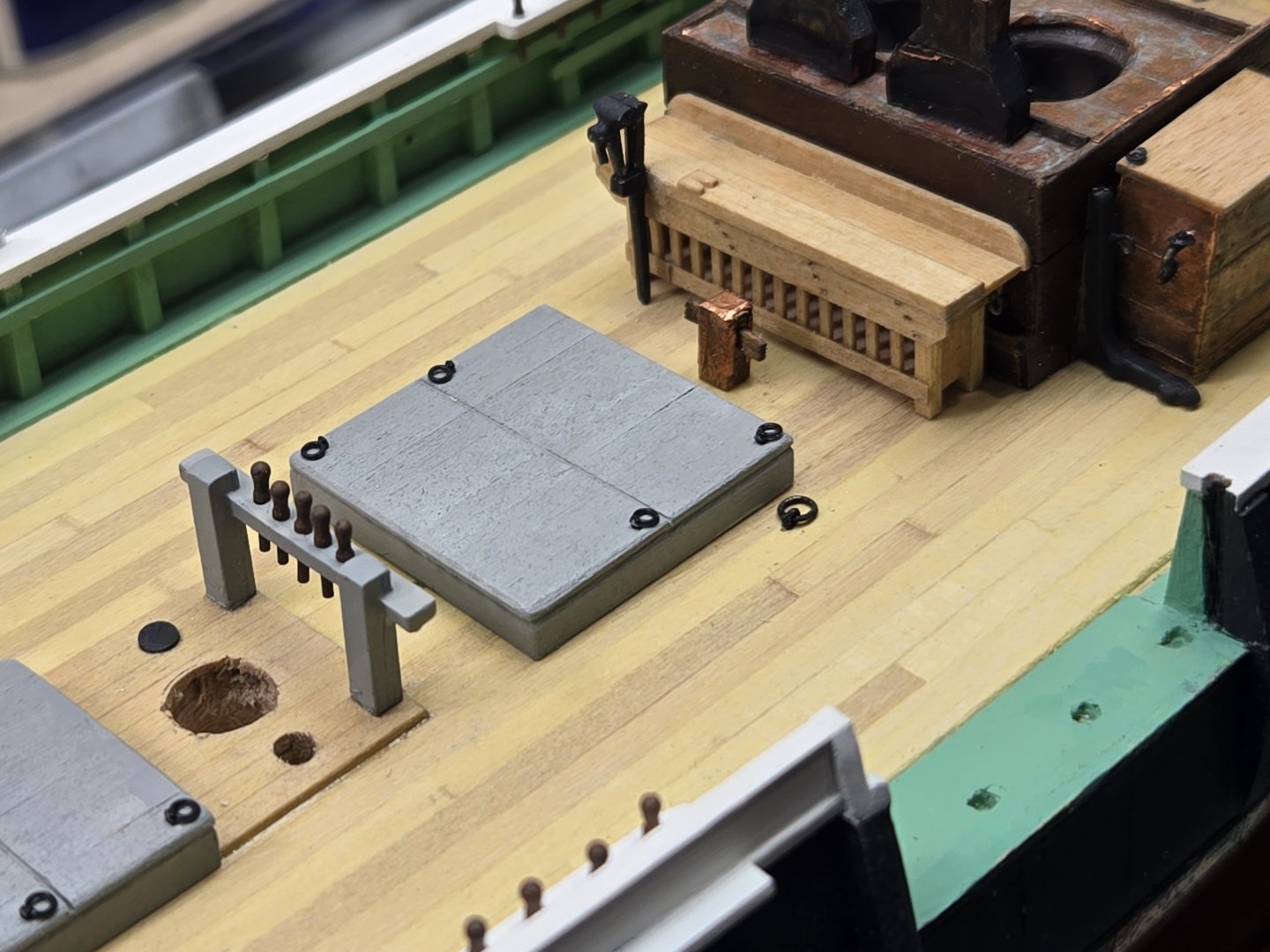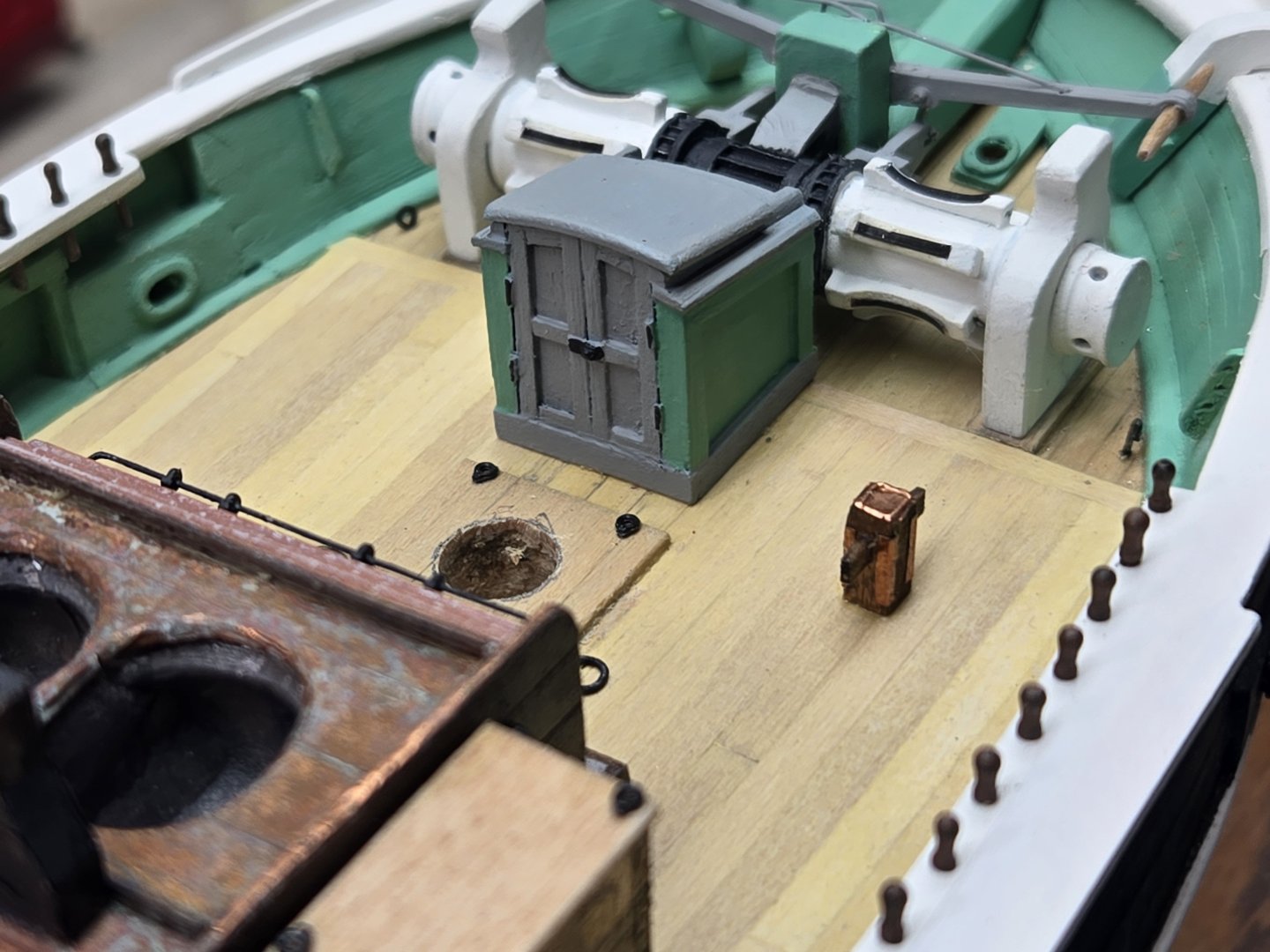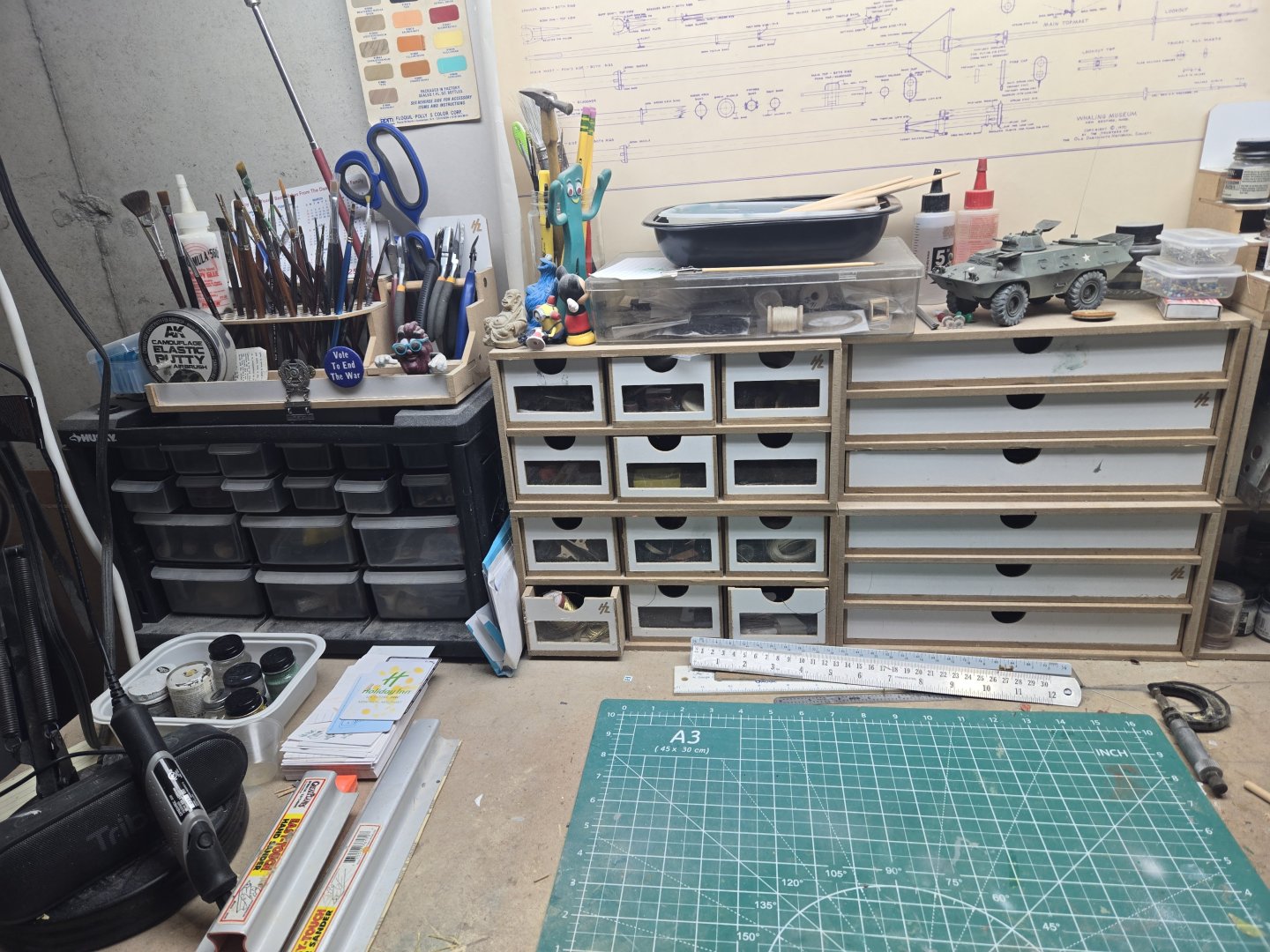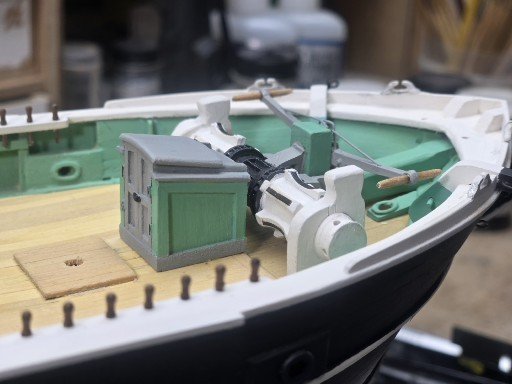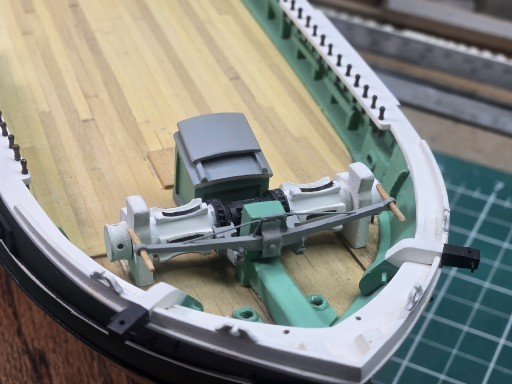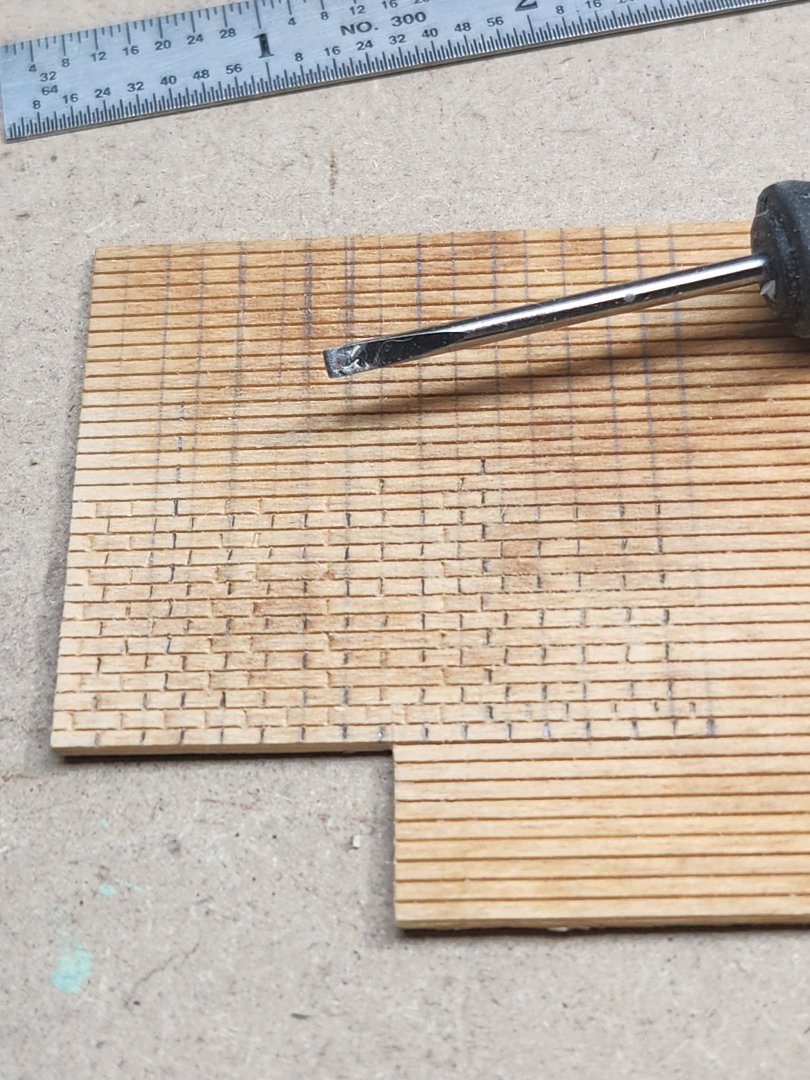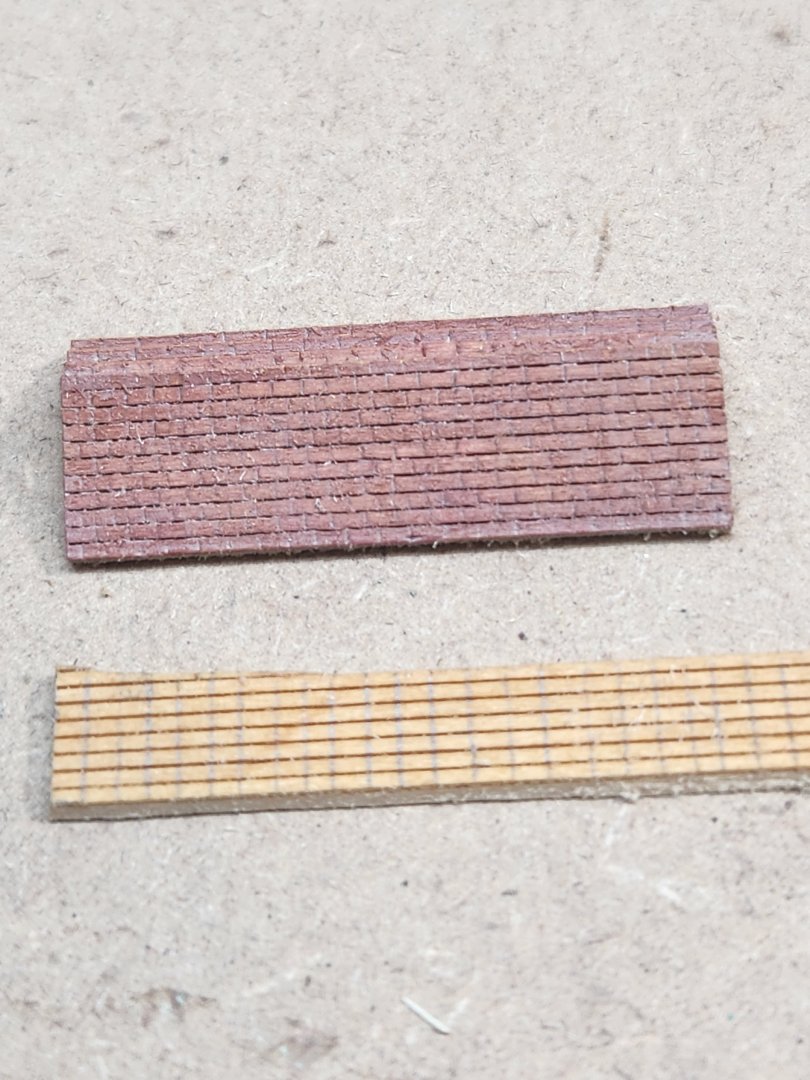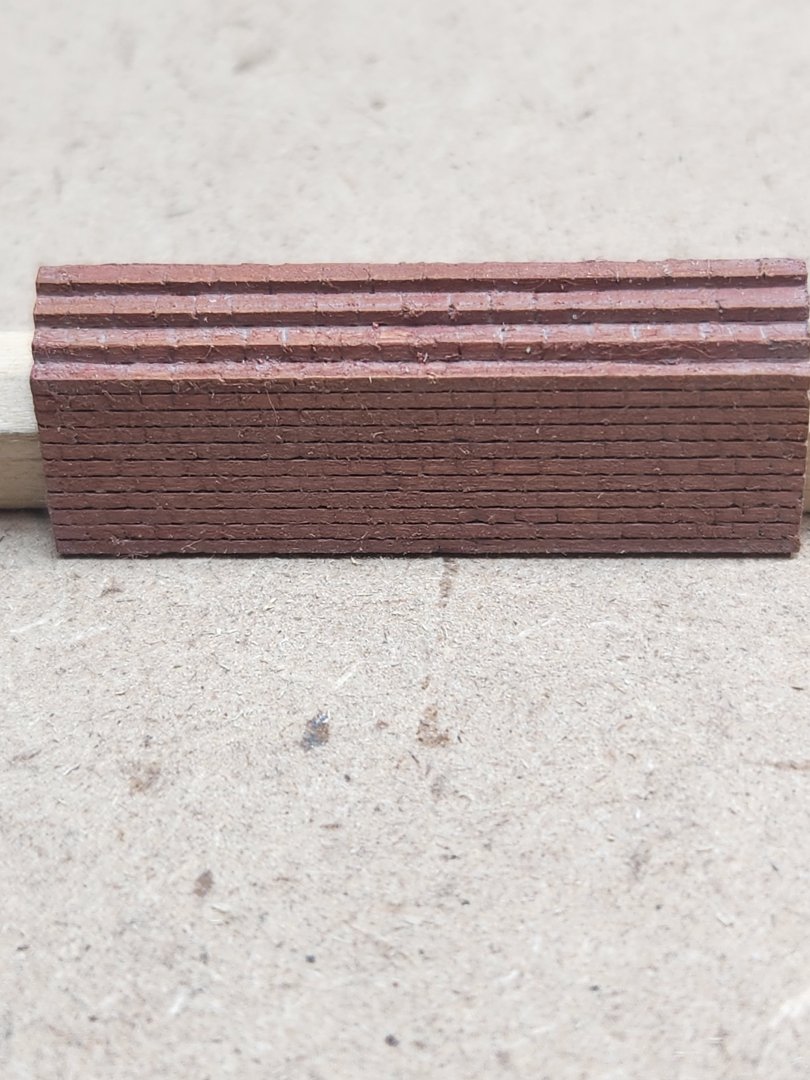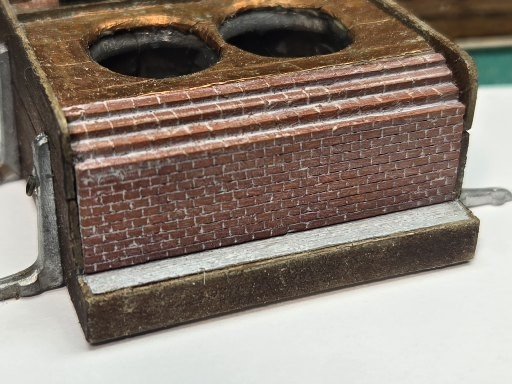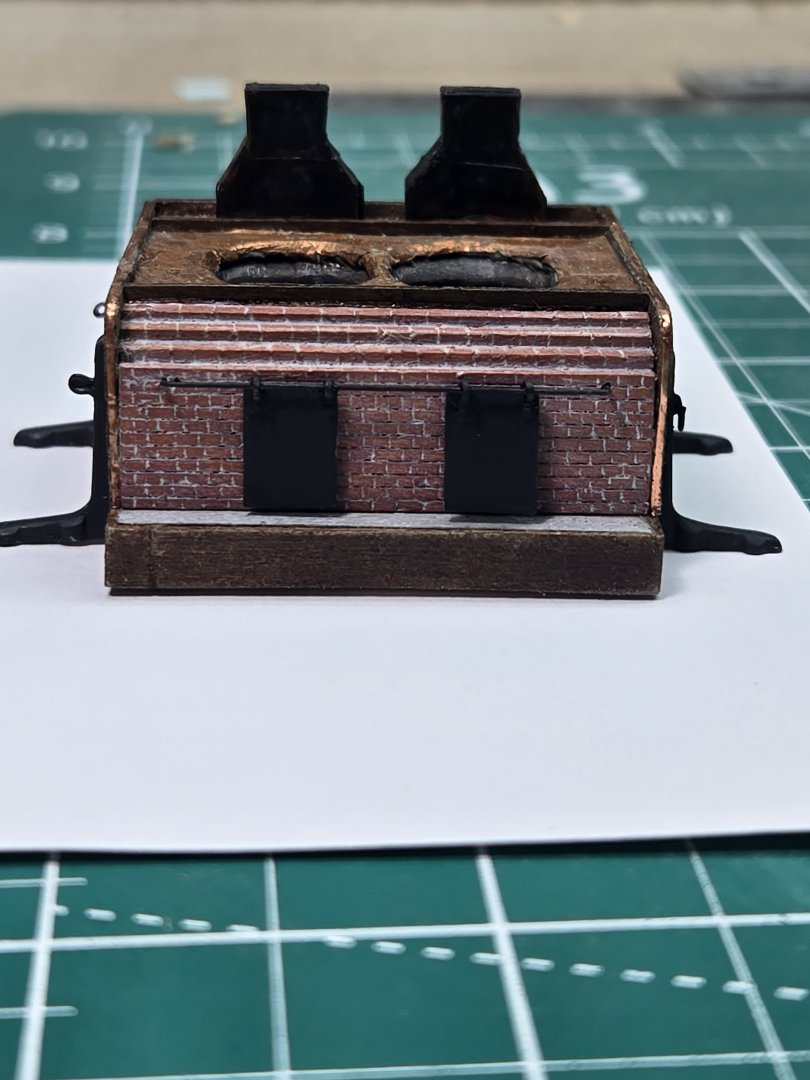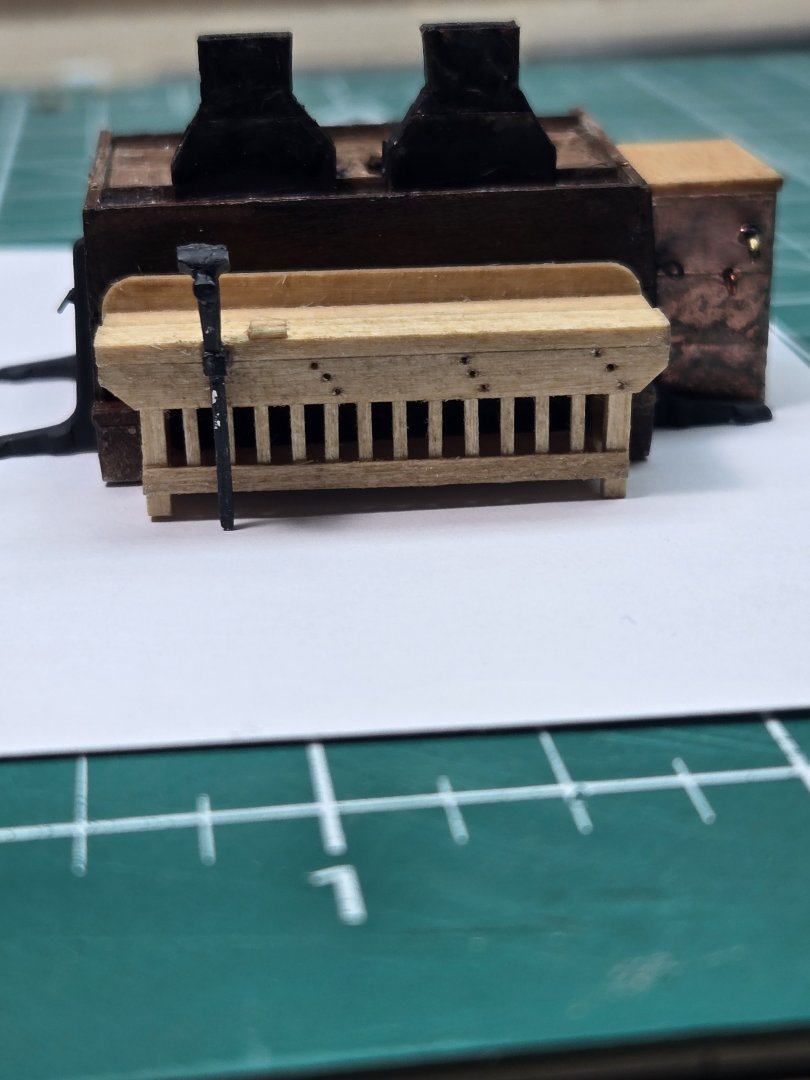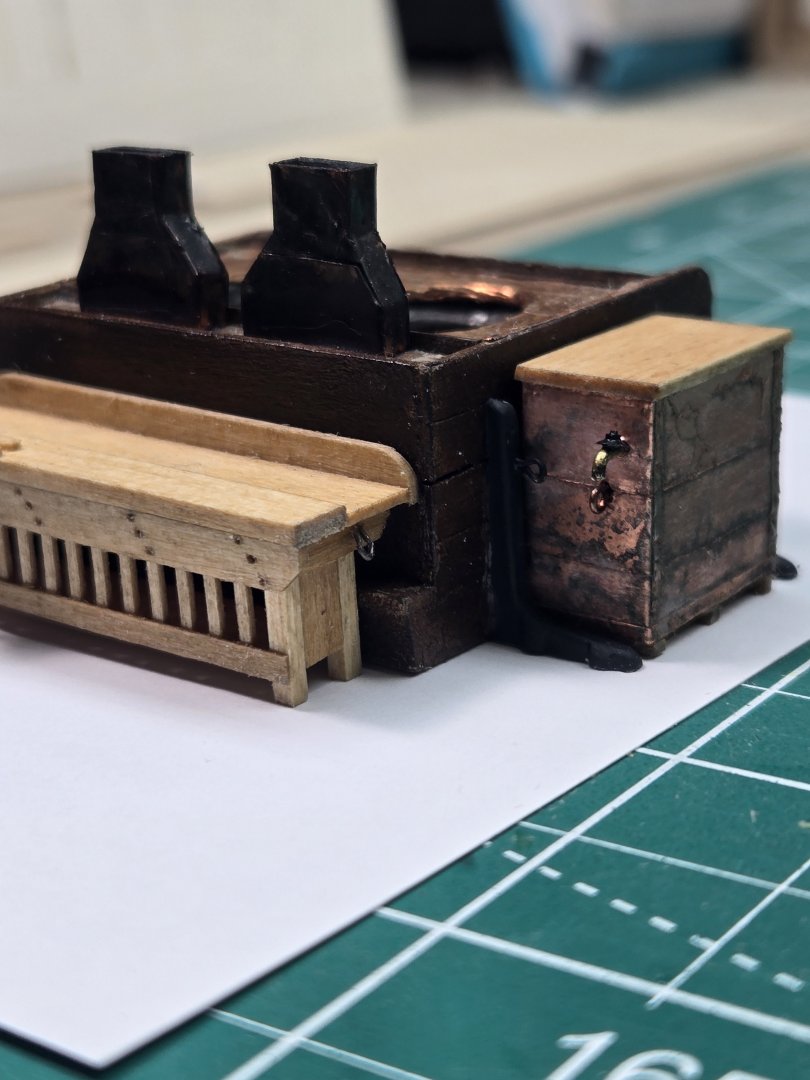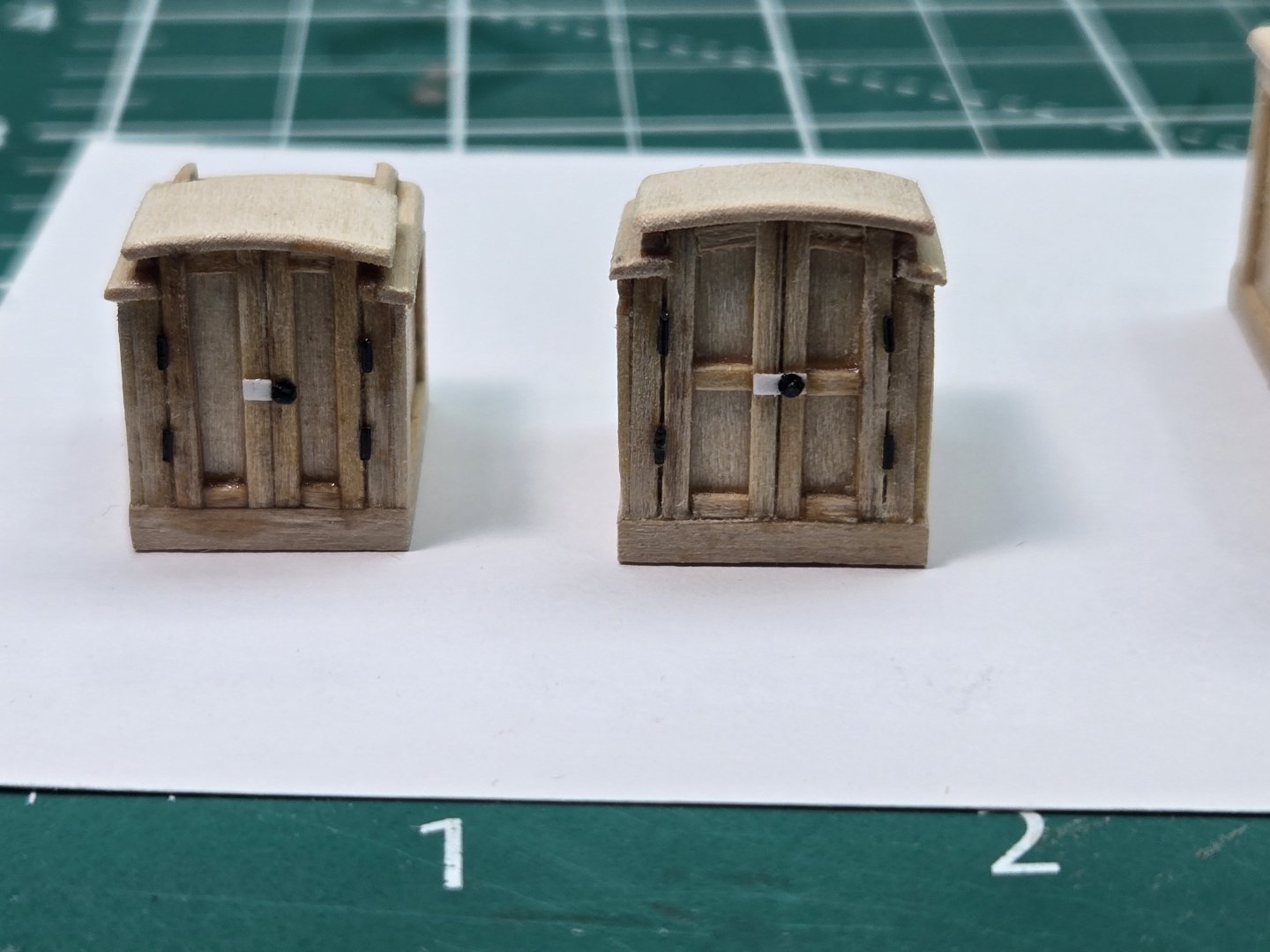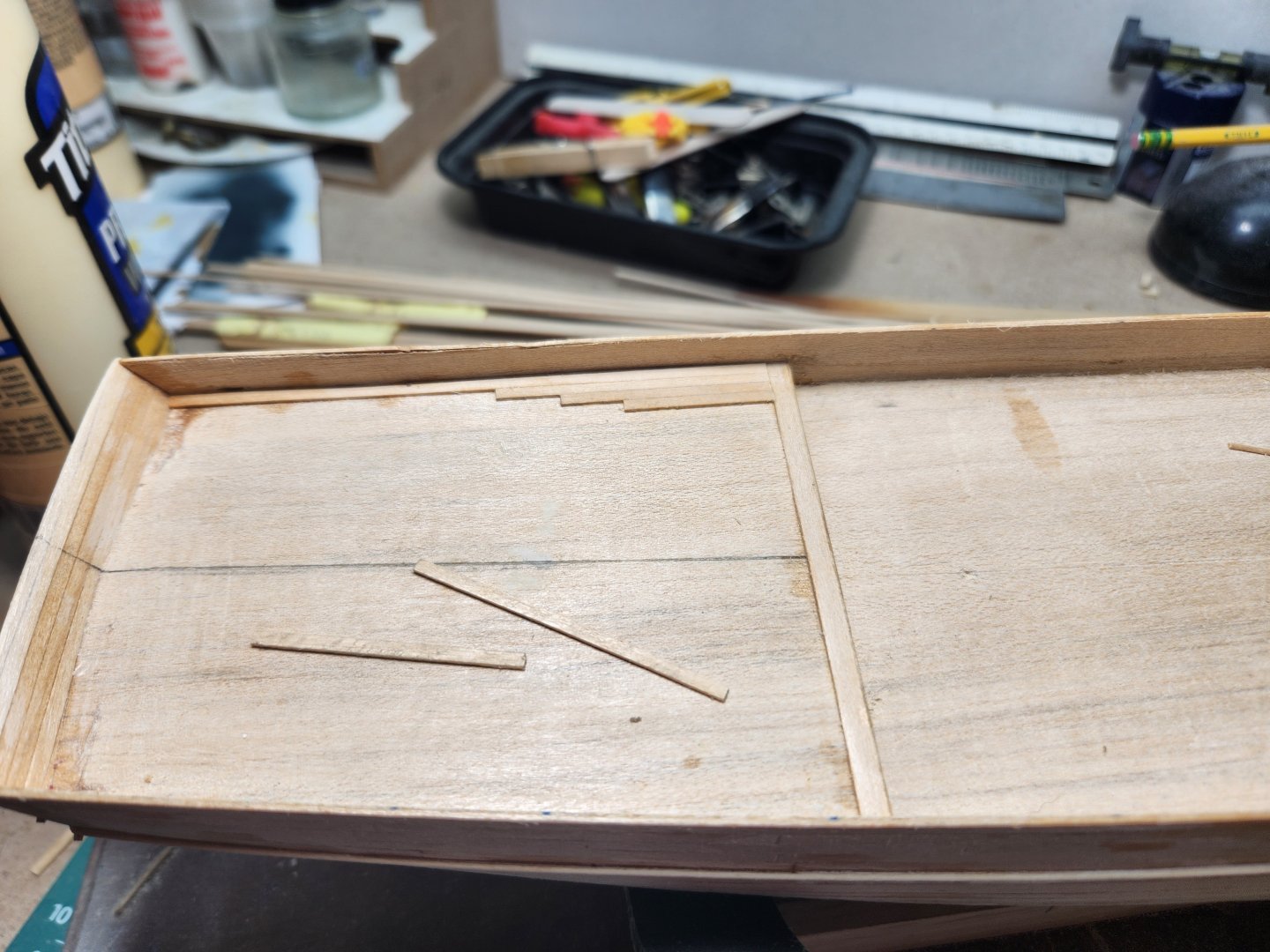-
Posts
143 -
Joined
-
Last visited
Content Type
Profiles
Forums
Gallery
Events
Everything posted by Capt. Kelso
-
Similar to you I decided to take a break from another build. In my case I relocated which meant setting up a new work area and all the hassles involved in moving. When I got settled, I found I lost momentum with my Kate Cory build and decided to work on something "simpler" to get back in the game. I decided on an older Model Shipways Harriet Lane solid hull, 1/144 scale kit. I'm often wondering what I was thinking. Can't comment on the 1/96 scale kit but with regards to the cannon fit, it is very important to make sure the bulwarks are the correct height from the deck to accommodate the cannons before adding the decking and rail. Sounds basic but I decided to put a couple of cannons in place to ensure they fit correctly before gluing the decking. Mine did not fit properly and I had to decide to remove more of the wood hull/deck or build up the bulwark. I decided to lower the deck.
-
FYI, you may find it helpful to remove the laser burn before assembling, especially on parts that will be painted. It's more difficult to paint over the laser burn and get color consistency.
- 28 replies
-
- Lowell Grand Banks Dory
- Model Shipways
-
(and 1 more)
Tagged with:
-
Arda, yes, the Model Shipways instructions are easier to follow. Also, have many useful tips. One key distinction between the kits is the construction of oars. If you go with the model shipways build, consider an alternative to their oars. The Bluejacket kit uses the more traditional model builder styles versus simply shaping the laser piece. Here's a photo as an example.
-
I built the Bluejacket and Model Shipways kits, both fine kits but different scales. Depending on your skill level, the Model Shipways kit is an easier build. Vast difference in Instruction detail.
-

Harbor Freight 16" variable speed scroll saw
Capt. Kelso replied to Dr PR's topic in Modeling tools and Workshop Equipment
I've used an older version of the Harbor Freight scroll saw to scratch build RC airplane frames, similar build concept to model ship building. After some practice I found it to be an excellent tool. -

Remove Tamiya paint
Capt. Kelso replied to JoniP's topic in Painting, finishing and weathering products and techniques
I've removed paint from plastic kits by just soaking in Windex. I use a small plastic storage bin with a lid, paint usually will peel off. Used an old toothbrush on the stubborn paint. -
Some progress on deck structures. Need to clean up the copper on the try works, trying to give it a slight weathered look.
- 23 replies
-
You didn't provide any details on the "product", who makes it? I've never seen it before.
-
Here's my set up using a parts bin from Home Depot and some Modular units from Hobbyzone. The units are made of strong material which I assembled with wood glue. I didn't include everything on my bench, various other Modular units. I included the link. The draw units are excellent and available in different sizes. HobbyZone USA Modular Workshop System Solutions
-
Finished painting the hull and bulwarks. Adding the deck structures beginning at the bow. This is an old school time-consuming build, few cast fittings, no laser cut pieces. The kit instructions and plans lack considerable detail. I have to keep reminding myself the plans (kit and Museum) are not of the actual ship but are a representation of period vessels. Thanks to Thomas J. Lauria, (https://tjlauria.com/gallery/whaling-schooner-kate-cory/) and his model of Kate Cory for helping me keep my sanity and providing additional detail.
- 23 replies
-
I did some hull reefing on the L. A. Dunton Schooner under restoration at Mystic Seaport, the caulking went through the planking. That could be the result of the wood aging and sagging. When I removed ceiling planks and any excess Oakum from inside the hull, size of gaps in hull planks clearly varied. The hull planks being replaced were not milled to provide gaps for caulking.
-
Haven't made much progress of late, some life issues interfered with my hobby time, imagine that. The Try Pots have been an interesting project, more involved than I expected. Everything except the pots is scratch built. Fortunately, the Whaling Museum plans are very detailed. I still have some minor detailing, then a coat of Dullcoat lacquer will help bring color consistency. I think I did a post on the brickwork some time ago. Started with a piece of scribed deck and using a small screwdriver added the lines of bricks. Sealed the wood and painted using a rust color. When dry, a wash of light gray watercolor to highlight the mortar. Finishing the remaining deck structures. When building these small deck structures, I have found using various size precut small wood strips, HO and N scale modeling supplies, make it easier to reproduce scale trim and framing pieces. Also, poly rod was used for the window bars (have to post another photo).
- 23 replies
About us
Modelshipworld - Advancing Ship Modeling through Research
SSL Secured
Your security is important for us so this Website is SSL-Secured
NRG Mailing Address
Nautical Research Guild
237 South Lincoln Street
Westmont IL, 60559-1917
Model Ship World ® and the MSW logo are Registered Trademarks, and belong to the Nautical Research Guild (United States Patent and Trademark Office: No. 6,929,264 & No. 6,929,274, registered Dec. 20, 2022)
Helpful Links
About the NRG
If you enjoy building ship models that are historically accurate as well as beautiful, then The Nautical Research Guild (NRG) is just right for you.
The Guild is a non-profit educational organization whose mission is to “Advance Ship Modeling Through Research”. We provide support to our members in their efforts to raise the quality of their model ships.
The Nautical Research Guild has published our world-renowned quarterly magazine, The Nautical Research Journal, since 1955. The pages of the Journal are full of articles by accomplished ship modelers who show you how they create those exquisite details on their models, and by maritime historians who show you the correct details to build. The Journal is available in both print and digital editions. Go to the NRG web site (www.thenrg.org) to download a complimentary digital copy of the Journal. The NRG also publishes plan sets, books and compilations of back issues of the Journal and the former Ships in Scale and Model Ship Builder magazines.



